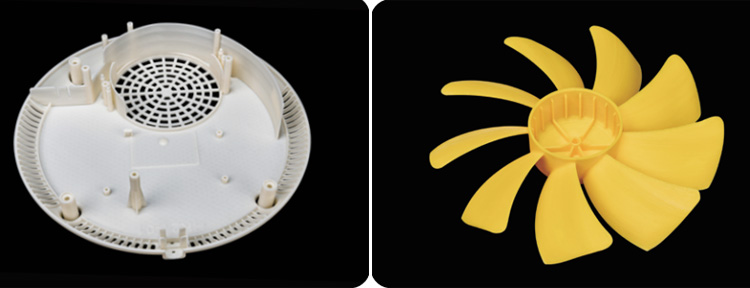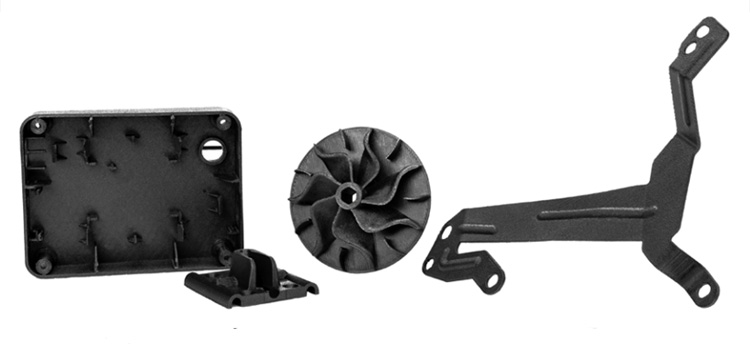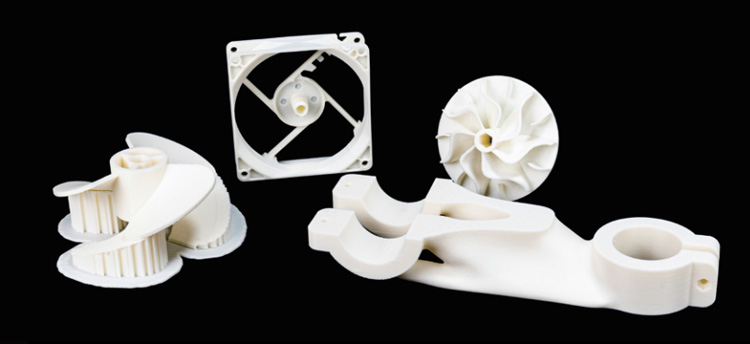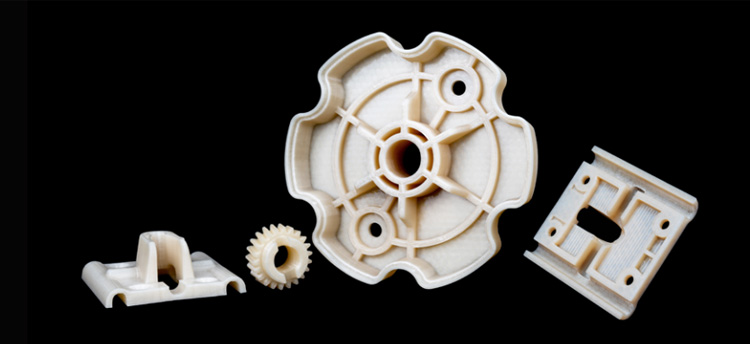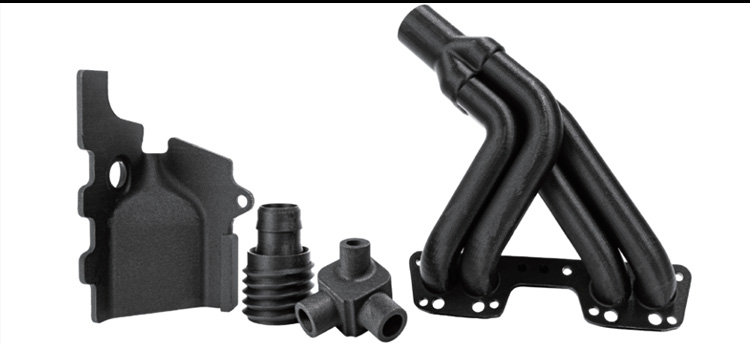3D printers of different levels are equipped with different configurations, hence supporting different types of 3D printer materials. The following 3D printer materials are all of FDM printing. Which materials should you use on your 3D printer? Read this!
Part 1: 3D printer materials for model appearance verification
To do model validation, PLA, ABS, and HIPS are all excellent for 3D printer users to obtain better 3D printed models in terms of model surface quality.
PLA
PLA is one of the earliest materials used for 3D printing, currently the most widely used thermoplastic material for FDM 3D printers. Its low melting point enables fast printing at lower temperatures, without warping and odor when printing. PLA 3D printout is ideal for concept modeling and rapid prototyping of garage kits.
PETG
The model surface printed with PETG material is brighter than PLA. PETG prints with a higher temperature than PLA, emitting fewer odors than PLA. PETG printouts are less likely to shrink or warp. Some outdoor models can be printed with PETG materials.
ABS
ABS material is one of the five generally-used thermoplastics, with high toughness and resistance to high temperature. The surface of the model printed with ABS material is smooth, delicate and flat, and the quality is excellent. It is the material with the most beautiful surface among the FDM 3D printer materials. It can be used for prototyping small appliances; printing mechanical parts, auto parts, mobile phone parts, and prototyping verification.
ABS filament gives off unpleasant odor when printing. And it needs an well-enclosed printing chamber to keep constant warm, otherwise the printing may fail or the printed models get warping or shrinking.
HIPS
HIPS gives off no odors when printing. The printed model has good gloss, good mechanical properties and good stability, and is easy to paint on. It is suitable for printing outdoor parts. The inter-layer bonding of HIPS is better than that of ABS, hence more suitable for printing thin-wall parts.
Part 2: 3D printer materials for functional application
PBT, PC, PA, PAHT are commonly used engineering materials for printing functional parts. With excellent heat resistance and chemical resistance, they can keep excellent mechanical properties over a wide temperature range, suitable for printing structural and functional parts.
PBT
PBT has good toughness and good adhesion between layers. Its good bonding effect on the thin-walled makes it perfect for printing thin-walled parts and small cylindrical models such as snaps, electronic appliances, latches and its matching inserts. Before PBT printing, it is recommended to put it in the dryer box for dehumidification and drying.
PAHT
PAHT printouts could maintain excellent mechanical properties even at high temperatures (>150℃), ideal for printing engineering heat-resistant parts used in automobiles (engine covers, air intake devices, etc.), and electronic/electrical industries (connectors, power connectors, etc.).
PA
PA material has the characteristics of high tensile strength, wear resistance, lightweight and excellent lubricity. The surface of the print pieces is smooth, resistant to heat and chemicals. Its toughness is better than that of PAHT, good for printing parts such as pump impeller, valve seat, bearing, instrument panel, air regulating valve and so on.
PC
PC has extremely high strength to resist outside impact. Models printed with PC have good interlayer adhesion, not easy to warp during printing. The PC printouts can endure long-time work at temperature over 100℃. It’s suitable for making small instrument parts, impact-resistant auto parts, or high-performance parts in aerospace fields.
PP
PP has a relatively low density, one of the lightest in plastic materials. It has excellent mechanical properties and heat resistance. High heat resistance allows it to be used in higher temperature environments. PP printed models are widely used in ventilation ducts and auto parts. It’s noticeable that PP printing requires a special film on the print platform.
Part 3: fiber reinforced 3D printer materials for better results
Commonly used carbon fiber composites include PA12-CF, PET-CF, PP-CF, PP-GF, PPS-CF / PLA-CF / ABS-CF. Due to the contained carbon fiber, carbon fiber reinforced filaments inherit some features from carbon fiber, like with higher rigidity, stronger strength & stiffness, excellent surface quality, dimensional stability, light weight, and ease of printing.
These characteristics enable printouts of CF composite materials get greatly improved mechanical properties, like high strength, light weight, dimensional stability, and high heat resistance.
Part 4: Which 3D printer supports which materials?
They are varying in water absorption rate, tensile strength, or Flexural strength, hence requiring different printing temperature, different heating bed temperature, and different printing conditions. Click here to see detailed parameters and value comparisons among those 3D printer materials.
Generally speaking, the more advanced-level your FDM 3D printer is, the more FDM materials it supports. Improper use of 3D printer materials may lead to problems of nozzle block, printing failure, etc. Which materials your printer supports is clearly noted on its user manual. The following recommend you some professional Flashforge 3D printers.
Creator 3 3D printer compatible with PLA, ABS, PVA, PETG, HIPS, PA, and PC.
Creator 3 Pro 3D printer compatible with PLA, ABS, PA, PC, PVA, HIPS, PETG, Wood, ASA, and PACF.
Creator 4 3D printer using its Extruder-HT to print PC, PA, PP, PETG, ASA, ABS, PLA, PC-ABS, and PAHT;
using its Extruder-HS to print PACF, PET-CF, PP-CF, PA -GF, PC-ABS, PP-GF, PPS-CF, and PPS.
Guider 2S 3D printer supporting PLA, ABS, TPU 95A, PETG.





